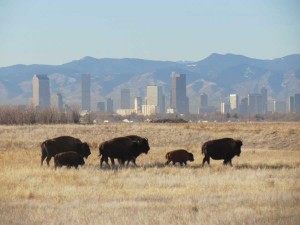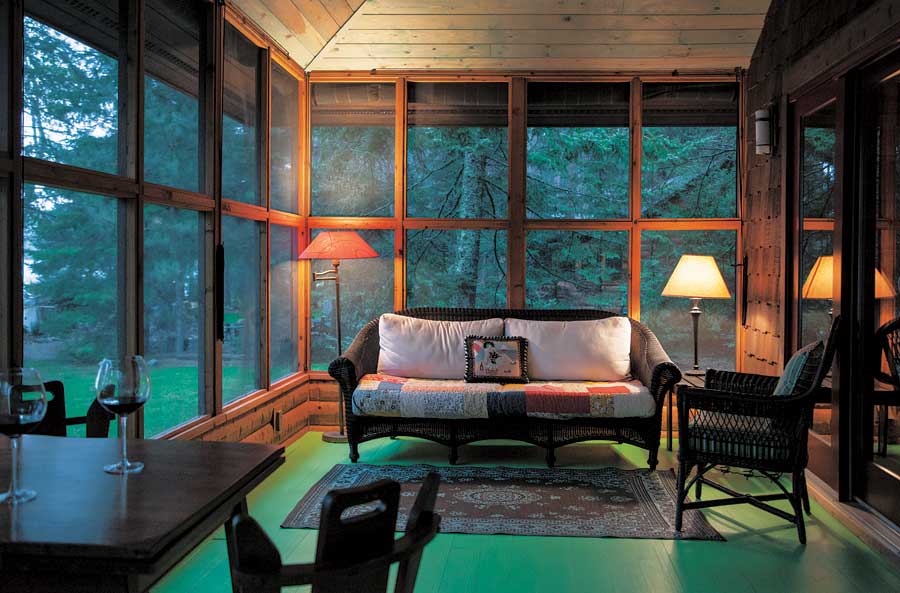Wild Things You Make My Heart Sing
07 Jan 2016
Our county and state offer amazing wildlife watching.
Visit these places at the appropriate times and you’re sure to see spectacular things.
By Ruthanne Johnson Watching wildlife is exhilarating—so much so that people pay big bucks to see nature’s amazing spectacles, like thousands of wildebeests thundering across the Serengeti or grizzlies catching salmon in Alaska. Boulder County is blessed with free wildlife viewing, from hummingbirds and foxes to eagles and mule deer. But the rest of the state also offers extraordinary wildlife watching, including the nine spots listed here. Take binoculars and a camera to document it, so friends will believe your wild tales.What: Wild Mustangs
Where: Sand Wash Basin, Craig When: Spring through fall Tip: The best times to see mustangs are early morning and dusk, when they gather at watering holes. At first glance, the basin looks harsh and uninviting. But a drive through the nearly 158,000 acres of Bureau of Land Management land in northwest Colorado reveals abundant foxes, coyotes, jackrabbits and hawks. However, it’s the 500 or so wild mustangs that make this place shine. Remnants from Spanish settlement and pioneer days, the mustangs roam in bands. Larger bands usually consist of a stallion, his mares and their foals. Smaller bands are often bachelor groups of young stallions not yet mature enough for their own harem, or older males who lost their bands to other stallions. The mustangs are robust and colorful, like one brown-and-white paint named Picasso who still roams the basin at nearly 30 years old. The mustangs are accustomed to people, so it’s easy to get close, says Wendy -Reynolds, field manager of the BLM office in Craig. But these horses are wild, so keep at least 100 yards distance for safety. Off-road driving is not permitted, but visitors can primitive camp anywhere in the basin, except near watering holes. “Eons ago, the land here was under water,” Reynolds says, so observant hikers can see unusual treasures like tiger chert and even turtle fossils. You can also visit nearby Brown’s Park and Dinosaur National Monument. For information and a map that includes a horse-viewing loop, stop by the BLM office in Craig.What: Mountain Goats
Where: Blue Lakes, White River National Forest When: Spring through fall Tip: The trailhead to Quandary Peak is near Blue Lakes. Weekday visits are advised if you want to miss the weekend 14er crowd. Blue Lakes just south of Breckenridge practically guarantees an up-close experience with mountain goats. Located at the top of Blue Lakes Road off Colorado Highway 9, the lake is basically a reservoir that collects snowmelt from the surrounding 14ers, Quandary Peak and Mount Lincoln. About 50 mountain goats live there year-round, and it’s not unusual to see goats on the road and in the upper parking lot below the dam. Their shaggy white coats are sleek and full until the end of June. In fall, their coats thicken up again for winter. But even at their scraggliest, the white goats stand out against the granite backdrop and deep blues and greens of the mountains. In spring, nannies and their kids stake out the reservoir, licking minerals from the parking lot and roads, and sometimes from beneath cars. There are usually a few juveniles in the mix, along with one or two older bucks. Don’t let their calm demeanor fool you; give them room or you might have a run-in with a set of very sharp horns.What: Elk
Where: Rocky Mountain National Park When: Early September to mid-October Tip: Turn off your car after you’ve found a viewing spot so you don’t disturb other viewers.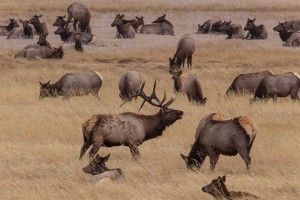
What: Bats
Where: Orient Mine, San Luis Valley When: Mid-June through early September Tip: Lodging and camping are available at the adjacent Valley View Hot Springs, a clothing-optional hot springs, but book well in advance. Lodging is also available in nearby Crestone. Every summer around mid-June, hundreds of thousands of bats start arriving at the Orient Mine. Their journey starts in wintering grounds in Mexico or as far away as South America. Once they’ve all arrived, their population tops a whopping 250,000. The colony of mostly male Mexican free-tailed bats comes to feast on the bounty of insects in the San Luis Valley, a predominantly agricultural community. They roost in the mine by day and forage at night. Orient Land Trust, a nonprofit conservation group, owns the mine and 2,200-acre surrounding property. It offers free dusk tours throughout summer to watch the bats emerge. The tour includes a 1.7 mile (one-way) guided hike and about an hour to watch the bats fly out. “The bats typically start with this serpentine column that rises from the mine and snakes onto the horizon,” says bat specialist Kirk Navo. Quite often, great horned owls and other predators gather nearby to try and snatch a mid-flight meal.What: Bighorn Sheep
Where: Bighorn Sheep Canyon, Cotapaxi When: Mid-October through December Tip: Because of their color, bighorn sheep blend right into the steep, rocky terrain, so look closely.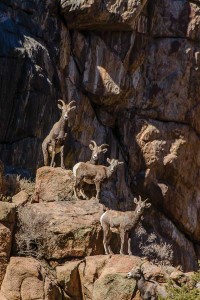
What: Sandhill Cranes
Where: Monte Vista National Wildlife Refuge, San Luis Valley When: Mid-March and mid-September through October Tip: For the most dramatic viewing, park on a shoulder pullout right outside the refuge just before dawn.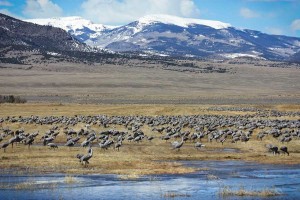
What: Osprey, Bald Eagles and Great Horned Owls
Where: Sawhill Ponds, Boulder County When: Year-round Tip: Take a nature hike with the park naturalist in each season to see migrating wildlife and pond inhabitants.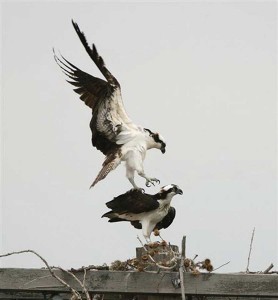
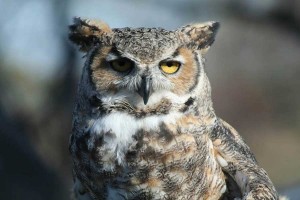
What: Moose
Where: State Forest State Park, Jackson County When: Winter and spring Tip: Moose may seem approachable, but these large beasts can run fast and charge suddenly, especially mothers with calves. Always leash your dog.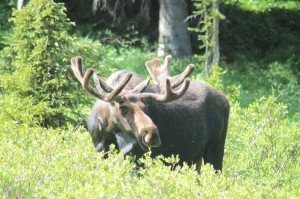
What: Bison, Burrowing Owls and Bald Eagles
Where: Rocky Mountain Arsenal National Wildlife Refuge, Commerce City When: Year-round Tip: You can drive the wildlife-viewing loop, but the trails are where you’ll really get away from crowds.